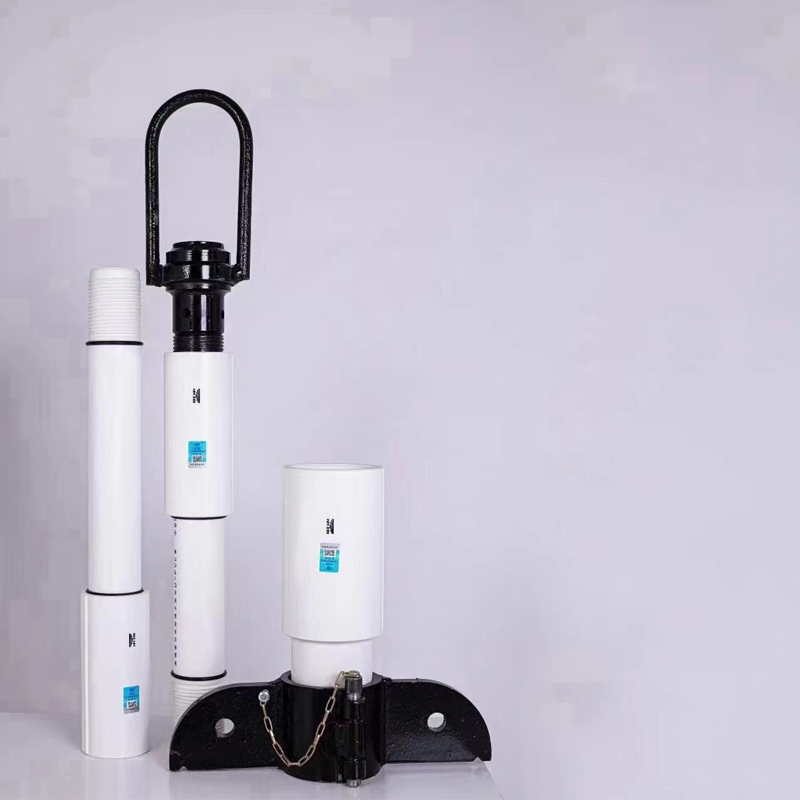Dec . 16, 2024 13:12 Back to list
China HDPE to PVC Transition Solutions for Superior Connection Efficiency and Durability
Understanding the Connection Between HDPE and PVC in China's Industry
In recent years, the global push for sustainable materials and efficient construction practices has brought polyethylene (HDPE) and polyvinyl chloride (PVC) to the forefront of various industries, particularly in China. These two materials, while distinct in their chemical composition and applications, often require effective connection strategies in order to optimize performance in infrastructure projects.
HDPE and PVC Material Properties
High-Density Polyethylene (HDPE) is a thermoplastic polymer known for its strength, durability, and resistance to impact and chemicals. It boasts a high tensile strength and low density, making it ideal for applications such as piping systems, containers, and geomembranes. Its versatility allows it to be used in a variety of sectors including agriculture, municipal services, and construction.
On the other hand, Polyvinyl Chloride (PVC) is another widely used thermoplastic that comes in both rigid and flexible forms. PVC is recognized for its low cost, lightweight nature, and resistance to corrosion and chemicals, which makes it suitable for plumbing, electrical conduits, and even flooring materials.
Both HDPE and PVC are favored in construction due to their resilience and low maintenance requirements
. However, connecting these two materials effectively poses specific challenges.Challenges in Connecting HDPE and PVC
One of the main challenges when connecting HDPE to PVC lies in their differing thermal expansion properties. HDPE expands and contracts with temperature fluctuations, which can create stress at the joint if not addressed properly. Moreover, the chemical composition of each material results in different bonding characteristics, complicating adhesive or mechanical connection approaches.
china hdpe to pvc connection

Another significant consideration is the joining methods. Traditional methods for joining HDPE include butt fusion, electrofusion, and socket fusion, which are effective for HDPE connections but not necessarily compatible with PVC. For PVC, solvent cementing and mechanical fittings are commonly employed. Therefore, finding a solution that accommodates both materials requires innovative approaches.
Connection Solutions Best Practices
To address these challenges, several connection methods have been developed. One effective approach is the use of transition fittings that are specifically designed to connect HDPE and PVC. These fittings often feature a bell-shaped design on one end that accommodates the PVC pipe, while the other end is engineered to fit HDPE. Utilizing such fittings minimizes the risk of leaks and ensures a stable connection.
Another promising method is the use of flexible couplings, which can absorb the movement between these two materials due to thermal expansion. These couplings are particularly beneficial in environments where temperature variations are common, thereby enhancing the durability of the connection.
Adhesive solutions can also be employed, although caution is advised. It is crucial to select adhesives specifically formulated for use with both HDPE and PVC to achieve a reliable bond. The surface must be properly prepared, cleaned, and primed to ensure the adhesive can perform optimally.
Conclusion
As construction and infrastructure projects in China continue to grow in scope and complexity, understanding the connection between HDPE and PVC is becoming increasingly vital. By utilizing appropriate transition fittings, flexible couplings, and compatible adhesives, industries can effectively harness the strengths of both materials while minimizing the potential drawbacks of their integration. The future of construction in China may well hinge on such innovative solutions that promote efficiency, sustainability, and durability in material connections. Through continual research and development, the synergy between HDPE and PVC can help pave the way for enhanced infrastructure that meets modern standards and environmental considerations.
-
High-Quality PVC Borehole Pipes Durable & Versatile Pipe Solutions
NewsJul.08,2025
-
High-Quality PVC Perforated Pipes for Efficient Drainage Leading Manufacturers & Factories
NewsJul.08,2025
-
High-Quality PVC Borehole Pipes Durable Pipe Solutions by Leading Manufacturer
NewsJul.08,2025
-
High-Quality PVC Borehole Pipes Reliable PVC Pipe Manufacturer Solutions
NewsJul.07,2025
-
High-Quality UPVC Drain Pipes Durable HDPE & Drain Pipe Solutions
NewsJul.07,2025
-
High-Quality Conduit Pipes & HDPE Conduit Fittings Manufacturer Reliable Factory Supply
NewsJul.06,2025

